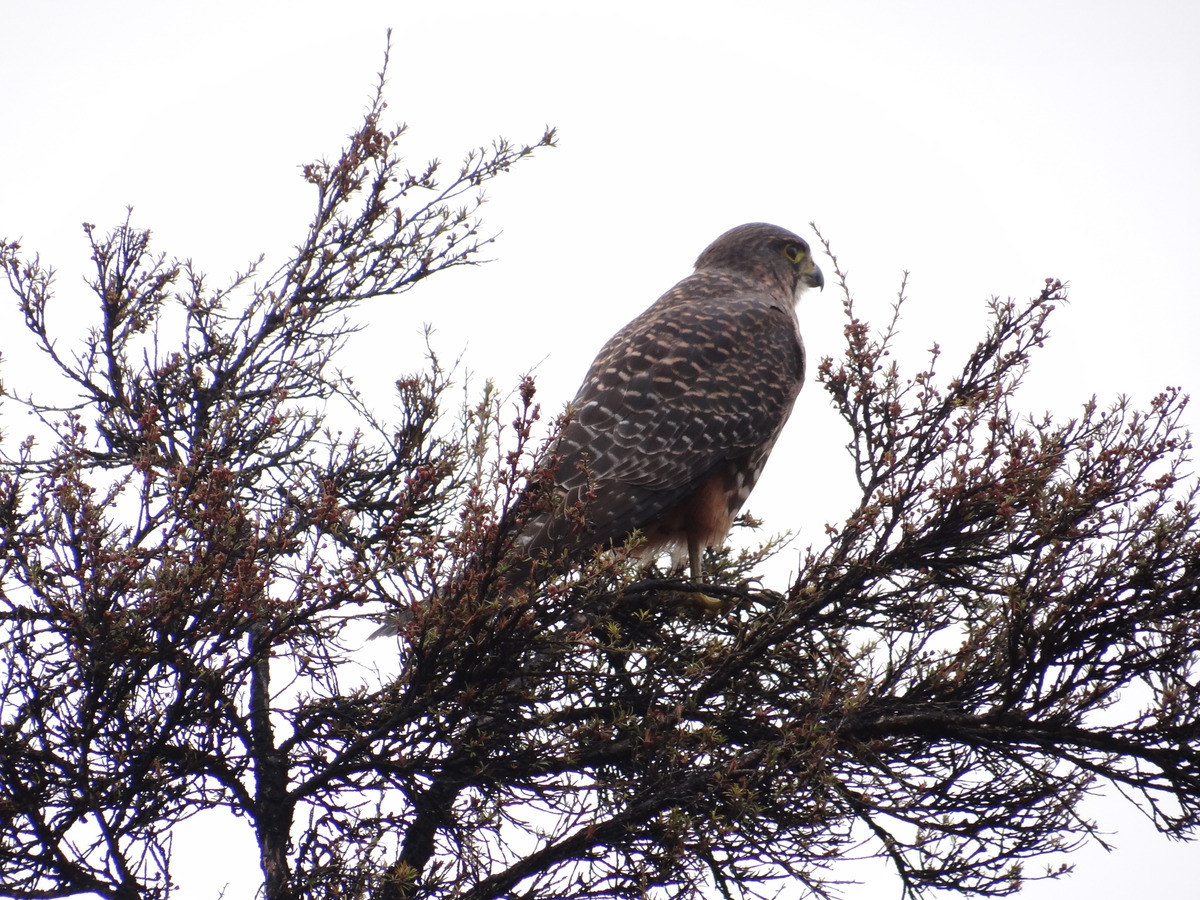Five year milestone for Kārearea study

Staff Reporters
18 October 2024, 4:06 PM
 A female kārearea in Mt Iron area. PHOTO: Ian Hancox
A female kārearea in Mt Iron area. PHOTO: Ian HancoxA new partnership with Cardrona Distillery will provide a significant boost for a local project to gather information about kārearea.
Kārearea are New Zealand’s only native falcon species, with a high threat classification and low population density.
The species has been poorly studied in the past, particularly in the alpine environment.
The Kārearea Project, led by Cardrona-Treble Cone, aims to inform conservation management of the bird in the local area and high country - essentially collecting more data about the kārearea in order to understand how best to protect it.
Its goal is to “close the knowledge gap,” Treble Cone ski area manager and RealNZ sustainability lead Ewan Mackie told the Wānaka App.

Project lead Ewan Mackie of Treble Cone Ski Area. PHOTO: Supplied
Last month the Kārearea Project held a five-year update event on the project and launched a partnership with the Cardrona Distillery.
The partnership will provide significant funding for the next three years, Ewan said.
It will enable the continuation of the project and allow it to “scale up” with more resources across the district.
Since the project began, the study has expanded to understand the falcon’s behaviour beyond just the high country of the Cardrona Valley.
It now covers much of the Upper Clutha, including Hāwea, Luggate, Glendhu and the Matukituki Valley.
Its broad goals are to estimate the kārearea breeding population size and territory size, quantify nest survival rates and causes of nest failures, estimate adult survival rates, and identify management actions that benefit its conservation.

A male kārearea in Albert Town. PHOTO: Graham Parker
Twenty-two nesting attempts have been monitored during the previous five-year period but they have had a 50 percent nest failure, with only 11 chicks fledged.
Most are victims to predators, such as ferrets, possums, cats and hedgehogs, Ewan said.
More recently there have been reports of adult birds dying, including three deaths attributed to window strike. At least one had been shot, which Ewan said was disappointing.
Ewan is involved with advocacy and education as part of the project.
He said increased local knowledge and awareness can both help protect kārearea and help add to the project; members of the community are encouraged by reporting any sightings to the project website.
This time of the year is the start of the breeding season so locals should watch out for breeding pairs and keep an eye on, but stay well clear of, their nesting sites (known as scrapes) - and report those sightings.
Courtship behaviour this time of year is distinctive and usually aggressive towards those in their territory or who get too close to the nest, Ewan said.
“If anyone witnesses this aggressive behaviour please tell us.”
Any other sightings of kārearea of any type will also help build on the project’s knowledge of local kārearea.
“Repeated sightings of active falcons is wonderful but being able to identify every single pair in the area would be absolutely fabulous,” Ewan said.
Otago Regional Council (ORC) highlighted the importance of communities getting involved with protecting birds last month when they released their stocktake of birds in the region.
The landmark study provided insights into the conservation needs of Otago birds and the pressing challenges they face.
“We need everyone — residents, businesses, and local groups — to pitch in and help protect Otago’s unique birdlife,” ORC senior terrestrial ecologist Dr Scott Jarvie said.
Read more: Bird stocktake shows need for community effort
Find further information about the Kārearea Project or post sightings of kārearea within the Upper Clutha district here.






